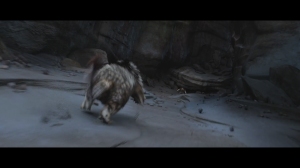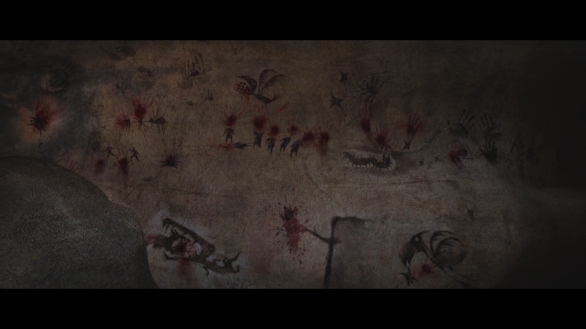FX Artist
I have chosen to research FX artists as one of my industry research pieces because visual effects can be used to enhance existing environments to make them more immersive for the audience, especially with the high increase in photo realistic VFX we see in movies today.
I want to look further into being a FX artist because it is a field of the industry I am greatly interested in pursuing as a job prospect in the future. An interest that has only increased after our recent visit to Double Negative, where they gave a presentation detailing what the company does and what they’ve been working on, but more importantly the job opportunities and how to get there. This lead to me to look at the job opportunities on their website and what is required to be FX Technical Director. They indicate that someone needs to have a good understanding of both Maya and Houdini to produce effects such as, smoke, fire, clouds,water,steam and explosions, plus experience using particle and voxel based systems. They also state that you need to be able to produce these effects to a photo realistic standard.
It is not the FX artists job to create an environment, but it is however their job to create certain aspects of the environment that bring it to life. We can see here in this clip from ‘Into the Woods’ how the particle effects are vital in creating the environment and making the scene believable. In the scene it would be the FX artists job to create the smoke and dust swirling around the character, using a combination of a particle system, to create the swirling motion and fluid dynamics to create the physical smoke from those particles. It would then be passed on to the compositor to layer all the different elements on top of each other.

‘The Revenant’ is another great example of where VFX has been used really enhance the scene instead of distracting the viewer from the action. Although you may not associate ‘The Revenant’ with outstanding VFX, it does have some truly inspiring moments, most notable being the bear fight scene. ILM handled the majority of the VFX and MPC and Cinesite were charged with the opening and closing battle scenes. ‘The Revenant’ was nominated for an Oscar for best VFX and only beaten by the slick, clean, VFX in ‘Ex Machina’. The reason ‘The Revenants’ VFX is so inspiring is the inability to see it, there is a great subtly to the effects, which makes it so believable. They have only used CG were is is 100% necessary and with a combination of live action and CG the have seamlessly blended the two together. Even in the bear fight scene was first filmed with a stuntman in a blue bear suit fighting Di Caprio, this brought emotion to the scene, in terms of movement, in terms of shadows, lighting, contact, and an actor’s reactions to another actor’s performance. The CG bear was then added over the top to mimic the stuntman’s movemment. 
Here is a job posting from double negative for the position of VFX TD, a position a few rungs above an artist or junior artist.
Job Description: FX Technical Directors gather a variety of 3D assets produced by our Build, Layout and Animation departments and use off the shelf software – primarily Houdini but also Maya – and custom pipeline tools to create particle, rigid body, fluid, cloth, fur and hair simulations.
Responsibilities:
-Use an array of commercial and proprietary software tools to produce photorealistic simulations of real-world phenomena while developing innovative solutions to complex problems.
-Create bespoke effects setups to fulfil client briefs.
Produce test and often final renders of FX elements for a shot.
-Create working test composites for review by the supervision team.
Work in partnership with lighters & compositors to ensure shots are delivered to the very highest standard.
Required Skills and Experience:
-Proven experience in producing effects such as smoke, fire, clouds, water, steam and explosions, plus experience with particle and voxel based rendering.
-An eye for details, good sense of timing, and thorough understanding of techniques and technologies relating to physical simulation in computer graphics.
-Experience in live action FX work preferred.
-Extensive knowledge of Houdini and/or Maya (Python, Hscript or Mel knowledge a plus).
Primarily the route into the business is to start out at a runner position, and with the aid of a mentor eventually move up to a junior position and beyond. Being a runner can be tough, working long hours and attaining to everyone’s needs from coffee to post, on top projects given to you as part of the mentoring process. However it is a necessary step on acquiring the knowledge and experience needed to move into a higher position within the studio.
Concept Artist
“Impeccable Scene Design for Game, Animation and Film: Weiye Yin (2011)”:
What is scene design?
‘Scene design is applied in game, animation, movies, advertising and other areas. However, no matter which area it is used , scene design is intended to tell stories and depict main characters. In simple words, scene design involves constructing a virtual landscape based on certain systems of world view (world view is a philosophical view term, referring to a person’s fundamental concepts of the whole world… it is generally interpreted as the existence of everything in the virtual world, survival rules and background in which certain things take place.’
‘Besides landscapes, the artists also have to design all the other elements on this planet, ranging from the land-forms, climate changes, origin and evolution of species, the social structure and behaviors of all biomass, to the flowers, birds, fish and insects, as well as rock sand dirt and dust.’
‘What the artist strive to construct is not a presentative scenery, but a coherent virtual entity – an overall structure encompassing the natural environment and social construction.’
‘…a designer has to be qualified in the following ways to produce outstanding scene design works:
– Well trained in drawing ( A designer can neither design no innovate unless he can illustrate out what he thinks and sees at ease)
– Innovative concepts ( A designer cannot survive fierce competitions in the industry solely depending on realist sketches… It takes inspirations as well as thinking to accomplish a piece of artwork)
– A profound knowledge of various subjects ( A designer should depend on a profound knowledge, outstanding vision and rich life experience to ensure that his works are convincing and credible.)
– A serious attitude ( The designer has to treat every process serriously, including concept development, selection of subjects, designing, sketching and drawing.)
This book outlines many different techniques used by concept artists to create their environments. Below is an example of how to use grid lines as a guide to create depth of field and distortion in your images. These I have found to be and effective tool when creating my own concept images for one of my ideas.

Compositor
A compositors job is to construct the final image by combining all the various assets from models and animations to special effects, graphics and backgrounds. This is usually done in such a way that the viewer believes all assets are part of the same scene. There are a few types of compositing in the film industry. The first being the traditional methods of physical compositing, multiple exposure, background projection and matting, all done on, or for use with, film. Next we have digital compositing where all these traditional methods are combined into one package, normally After Effects or Nuke, primarily Nuke for films as it gives the artists more control due to its node based system, whereas After effects uses a layer based system and is used more in advertising or motion graphics. I will be focusing more on digital compositing as it is an area much more relevant to me and the course.
As I understand the process starts off by importing rendered images from something like maya or houdini, as an EXR file so you are able to extract the the multiple channels, diffuse, ambient, shadow etc.. Also importing any other assets from matte paintings to live action and laying them all to achieve the look you want. A compositor should have a good understanding of how to manipulate colour to achieve a certain mood and also a good eye for setting up and adjusting lights within nuke. As I mentioned before Nuke is primarily used over after effects in the film industry as it gives the artists more control over different aspects of the scene. The node based system makes it much easier to create effects at certain points in the pipeline, it also makes it much easier to alter these effects on each seperate node, whereas in after effects you need to drag back through mutliple pre comps to find and edit effects, whilst trying to to alter anything else in the scene.
A relatively new innovation in the world of compositing I have found quite interesting is the art of deep compositing. Rather than layering multiple 2D images ontop of each other and using mattes and masks to manipulate them, deep comping creates a rendered image, that doesn’t just have a single Z depth for a certain point on the image, but instead it has an array of values that define the distance of each pixel relevant to a certain point in space. Basically giving the pixels of an image a position within a 3D space, thus allowing for compositors to place other assets inside the image without having to create multiple nodes or layers with separate masks.

Here is an example of deep comping being used in the ‘Orrery’ sequence in ‘Prometheus’. We can clearly see how each particle in blue has its own depth in the image as each particle passes in front and behind each other encasing the actress in the middle. This allows for a lot more realistic effect making the scene more believable for the audience.
Here is a job posting, listing some of the skills for a senior compositor at Empire Visual Effects:
Job Description:
• Responsible for maintaining high work standards on the compositing team
• Maintaining attention to detail in all aspects of production
• Seamless integration of plates and VFX elements to create photo-real composites
•*Handle difficult paint tasks
• Execution of complex and demanding shots
• Experience with projections and the 3D environment within Nuke
•*Bid & break down VFX projects
• Supervise & guide junior compositors and ensure proper procedures are in place
Requirements:
• Minimum 5 years photo-real compositing experience in both episodic television and feature film projects.
• Expert knowledge of Nuke
• Strong understanding of color, colorspace and grain.
•*Strong Paint skills including procedural paint
• Expert knowledge of tracking in Nuke – both 2D & 3D
• Expert knowledge of compositing, including channel manipulations, grain and integration of CG elements.
• Strong creative skills and a critical eye for maintaining a high level of execution
•*Ability to work under tight deadlines
• Maya experience a plus






















































































